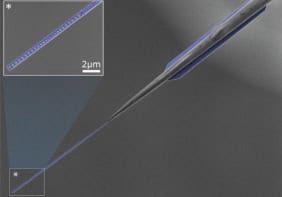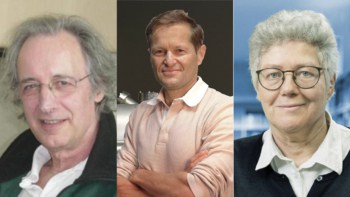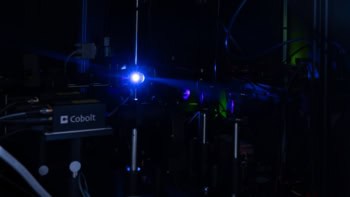German researchers have measured the duration and shape of a sonoluminescence pulse for the first time. Sonoluminescence - the emission of light by bubbles of gas trapped in a liquid and excited by sound waves - is one of the most puzzling phenomena in physics. Although first discovered in 1934, physicists have yet to discover the underlying light emitting process.
Sonoluminescence occurs because sound waves cause a bubble to expand and then collapse in a liquid. The bubble first expands to almost 10 times its original dimensions, and then collapses at supersonic velocities to a minimum diameter that depends on atomic forces in the bubble. At this point the implosion produces a flash of light and pulse of sound. The bubble then re-expands to its normal diameter.
Bruno Gompf and co-workers from the University of Stuttgart in Germany have successfully used a streak camera to study these rapid light pulses (Phys. Rev. Lett . 81 717). The trick was to take advantage of the predictable nature of single-bubble sonoluminescence (SBSL). As the bubble emits light at regular time intervals, the researchers could use a photomultiplier tube to activate the streak camera a fixed time after the previous light pulse. Based on the measurements of thousands of flashes, the average duration of a pulse was found to be 208 ps (±21 ps). This duration also appeared to be independent of temperature at fixed pressure and gas concentrations.
Gompf and co-workers also discovered that although the rise time of a SBSL pulse remains constant when the pressure is increased, the fall time increases. The team speculates that the fall time depends on the re-expansion rate of the bubble. Since the bubble takes longer to expand at higher pressures, more energy is converted to light, and hence the fall time of the pulse increases.



